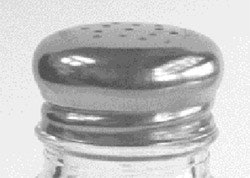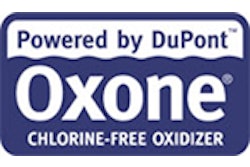
In the face of a sometimes-reluctant dealer network, the makers of salt chlorine generators are attempting to make further inroads into North American pools, with hopes that someday their products will be as ubiquitous here as they are in Australia, where as many as 90 percent of in-ground pools have them. That may be a lofty goal, but indications are that American consumers are coming around - even above-grounds and a similar device for spas are getting into the act - and dealers and builders who want to attract those customers are taking notice.
Salt Shines
Salt chlorine generators may have been slow to catch on initially in America, but that's changing quickly. According to Scott Newton, marketing manager for BioGuard, Lawrenceville, Ga., about one-third of new in-ground pools were being equipped with salt chlorine generators in 2004. "I'd estimate this year it's closer to 50 percent," he says. "And five years ago it was probably less than 10 percent."
And among all pools - both existing and new construction - the generators are making similar inroads. They seem to sell best in the Midwest, where, according to research by PK Data, 26.7 percent of respondents who own in-grounds say they're equipped with chlorine generators. The Northeast, West and South had strong showings of 13.3, 11.9 and 11.8 percent, respectively. "I don't know why that is," says Newton of the Midwest's big lead over the other parts of the country.
Regional differences aside, these numbers show that the salt chlorine generator's reputation is growing with consumers nationwide, and the reasons for that are rooted in several factors, including the soft feel of the water and ease of maintenance manufacturers have been promoting. Chief among the reasons, though, is that customers with chlorine generators no longer have to buy and handle chlorine, according to Janice Tegman, marketing manager for Polaris Pool Systems, Pompano, Fla., which makes the Auto Clear chlorine generator.
"There's no more pour and store," she says. "And it's a lot cheaper. With the controller, it regulates the salt level. If there's enough salt in the water, the device will continue to make chlorine. So it's easy for the consumer to use because they don't have to do that much anymore."
David MacCallum, product manager for automation at Pentair Water Pool and Spa, agrees, adding that "the cost of making chlorine is 65 percent energy-related, so as the cost of energy goes up, so will the cost of chlorine. And as the cost of chlorine goes up, salt chlorine generators start to become more attractive to pool owners."
Deal Me In?
Dealers here have been a little slow on the uptake, manufacturers say, because of fears that if they sell chlorine generators their customers will no longer have a reason to come into the shop for chemicals.
"We work with builders, and they're always looking for new products that'll take maintenance away, but retailers might resist a bit if they don't see that they're going to replace chlorine sales with specialty chemicals they can sell to balance the pool initially," says Tegman. "It still has to be balanced to begin with."
In addition to the startup chemicals, of course, dealers and builders can count on the cost of the unit, which range from $700 to $1,600 and up, and replacement cells and plates on the generators. Newton points out that if BioGuard, a big chemical company, can make room for a chlorine generator, dealers should be able to, as well.
"Crystal blue sparkling water, simple and easy. That's the business we're in," he says. "We've been on board with salt generators for five years. It's not displacing what we normally sell, but this is where new water is going and we think they're wonderful systems."
Newton views dealers' skepticism not as stubbornness, but rather a healthy reluctance to add new things to pools.
"If you look at things like ionizers and biguanide treatment, they both started off slow then grew to a pretty big size," he says. "So it just comes down to acceptance by the dealer network. People have to kick the tires for a few years and aren't going to just start throwing them on all pools."
The same can be said of spa dealers, according to Paul Birkbeck, vice president for Pioneer H2O Technologies, Lakewood, Colo. Pioneer manufactures a bromine generator for hot tubs, and it does basically the same thing as a salt chlorine generator. Why not just generate chlorine then?
"Salt chlorine generators aren't advisable for spas for the same reason that ordinary treatment of spa water with chlorine isn't," Birkbeck explains. "Namely, when chlorine reaches temperatures of 97 to 98 degrees Fahrenheit, it tends to turn gaseous.
"That's a volatile situation. You'd be moving chlorine in a gaseous state through the spa circulation system, and that's very corrosive to the equipment and will eventually damage the spa shell, too." Bromine, on the other hand, is a lot more stable in hot water, and that's why it's so widely used.
Pioneer's Genesis Device is similar to a salt chlorine generator, only it doesn't use regular salt and it doesn't produce chlorine. Birkbeck explains: "Chlorine generators use sodium chloride as the precursor. Bromine generators, like the Genesis Device, use sodium bromide, and the end result is bromine."
While everyone knows what salt and chlorine are, they may have a harder time understanding sodium bromide. "It's sometimes referred to as 'Dead Sea salt,'" Birkbeck explains. "It's not harmful in any way, and in many circles it's considered good for the skin, which is why people go sit in the Dead Sea. But you wouldn't want to put it on a sandwich."
Birkbeck says that Genesis Devices are being specified by a growing number of hot tub manufacturers, including Islander, Crystal Waters, Clearwater and others.
Salt For Above-Grounds
While most of the attention on salt chlorine generators has been directed at in-ground pools, above-ground pools can be equipped with them, too. One option would be to use a model that's been designed for an in-ground pool. Of course, someone spending $4,000 on an above-ground probably isn't going to want to spend another $1,500 so he or she won't have to buy, handle and store chlorine.
"We've taken the device and made it cost-effective for use in an above-ground pool," says David Agan, vice president for RecWaterTec in West Palm Beach, Fla., of the company's ChlorEase unit. "The technology is very similar."
Like chlorine generators for in-ground pools, the device produces chlorine through an electrolytic process of breaking down salt in the water. Unlike those more expensive models, however, it's designed for use only in above-ground pools with 18,000 gallons of water or less.
"It just hangs over the wall, mounting under the top rail and going down into the pool," Agan explains. "It requires no plumbing."
As for the product's potential, Agan points to the "Frost Belt" of the Midwest and Northeast, where above-ground pools - and salt chlorine generators - are most popular.
"As builders of in-ground pools do more and more of them there, dealers are going to be hearing more from people who want them on their above-grounds, too," he says.
Agan's optimism is grounded in other products that started as in-ground-only before being adapted for use in less-expensive above grounds, including fiber-optic lights, water features, solar heaters, and, in at least one case we're aware of, a vanishing edge.
Pentair's smallest salt chlorine generator is also well suited to the above-ground market, MacCallum says.
"The IntelliChlor has a 20,000-gallon cell option which could be used on an above-ground pool," he says. "The base prices is $529, and the user could set it at a reduced output to match the size of their pool. So they could set it at between 20 and 40 percent output depending on the size of the above-ground."
Panacea? Please.
Like many products that come onto the market, there's a tendency for early adopters to view salt chlorine generators as cure-alls. "With this in my pool, I won't have to worry about chemicals at all!" they think. Not so, says Newton. Homeowners may not like to hear it, but dealers will be happy to note that salt-chlorinated water still needs attention. First, the water needs to be in proper balance initially. BioGuard sells its generator as part of a complete system, called Mineral Springs.
"It has the electrolytic generation system - or the cell in the unit itself - and the starting minerals, pH adjuster, chlorine stabilizer, stain and scale inhibitors and clarifiers," Newton says. "That's the initial dosage. Then every week there's the Renewal System, which has chemicals to top off those levels and keeps the system running optimally."
BioGuard stresses the importance of water testing and ongoing maintenance, two things that uninformed customers may tend to ignore once they get a chlorine generator. Polaris's Tegman agrees.
"You still have to test for total hardness, etc.," she says. "The water has to be in a healthy balance. If the pool is out of balance, you could get scale buildup. So there's a little bit of maintenance still involved, in addition to the maintenance of the cell itself."
Many of the electrolytic cells have clear housings, so homeowners or techs can see whether there's scaling inside the unit that needs to be cleaned with acid solution. In addition, many of today's units have cells that reverse polarity, which is designed to get rid of the calcium precipitate on the cells.
"Reverse polarity doesn't do it completely, though," cautions Newton. "So you still have to take it out and clean it with an acid solution on occasion."
Kinder, Gentler Water
While salt chlorine generators don't get rid of pool maintenance, they do save customers time and, in the long run, money. None of that would matter, though, if the water the systems produced didn't live up to customers' expectations. This is where the salt chlorine generator really sells itself, according to Tegman.
"I'm not sure why, but the salt system just makes everything really clear," she says. "And the water doesn't burn your eyes. It has the same silky feel as the ocean but it's kinder to your body."
Newton agrees: "The consumers love it. They rave about the feel, the clarity, the brilliance and the ease of maintenance of the system. And when consumers rave about it, dealers and builders will get more confident in them and sell more of them."
A Look Behind The Curtain
Salt water goes in, chlorine comes out. Here's how
For many pool owners, it's enough to know that salt water goes in one end of a chlorine generator and chlorinated water comes out the other. Dealers and builders, on the other hand, ought to know a little more about the process than that so they can explain to more-curious customers.
Basically, salt chlorine generators take sodium chloride (salt) and convert it to chlorine and sodium by electrolysis. As the saltwater passes over the electrodes, the negatively charged chloride ions lose an electron to the positive electrode (the anode). Then the chlorides pair up and bubble off as chlorine gas. In addition, the positively charged hydrogen ions get an electron from the negative electrode (or cathode), then they bubble off as hydrogen gas.
The generator is plumbed in line (except for above-ground units) and works by converting a saltwater solution to chlorine as it passes over specially coated electrode plates. Salt must be added to the pool initially, and it must be properly balanced, but after that salt needs to be added only occasionally.
-B.K.
Balancing Act
The APSP publishes recommendations for water balance that apply equally to pools equipped with salt chlorine generators. Following these guidelines will help keep pools clean and clear while protecting the equipment and the pool finish. In addition, stressing these guidelines with customers will dispel any misconceptions they may have about salt chlorine generators being a replacement for routine chemical maintenance.
Free chlorine: Maintain at 2.0-3.0 ppm. Levels above 3.0 may cause corrosion, while levels below 2.0 will be ineffective.
Combined chlorine (chloramines): Superchlorinate to remove all chloramines, which tie up free chlorine in the pool and prevent chlorine from disinfecting the water. Superchlorinating, or shocking, gets rid of the organics and frees the chlorine for sanitizing.
pH: 7.2-7.8. Salt chlorinators produce water that is close to pH neutral, but other factors, such as calcium hardness or total alkalinity, could push it up.
Cyanuric acid: 50-75 ppm. Cyanuric acid in the proper range helps keep the sun's rays from destroying the chlorine.
Total alkalinity: 80-120 ppm
Calcium hardness: 150-400 ppm
Metals: None. Metals can stain the pool and some can cause loss of chlorine.
Nitrates: None. Nitrates can cause high chlorine demand and deplete chlorine from the pool. Make sure they're not present in the water.
-B.K.











































